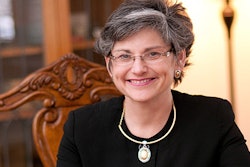Both chambers of Congress have passed a technology bill for MSIs. Now they need to bridge their differences to bridge the digital divide at MSIs.
After four years of fits and starts, minority- serving colleges may have their best opportunity yet in 2007 to secure congressional passage of a bill to address the digital divide at historically Black colleges, tribal colleges and Hispanic-serving institutions.
The full House approved the Minority Serving Institution Digital and Wireless Technology Act in September. It would authorize $250 million for the first year of a multi-year program aimed at helping HB- CUs, HSIs and others build their technology infrastructure and deliver training and resources to instructors and students.
“Students enrolled in HBCUs need all of the necessary state-of-the-art tools that will allow them to compete in a global society,” said Rep. Ed Towns, D-N.Y., a Congressional Black Caucus member and co-sponsor of the plan along with Rep. Randy Forbes, R-Va. Among other uses, colleges could utilize the funds to:
- purchase digital and wireless networking technologies and equipment for campus wiring;
- develop new technology education services;
- provide technical assistance through washingtonupdate| face-to-face and distance learning workshops;
- provide professional development to faculty and administrators; and
- implement joint projects with other MSIs on technology education.
“Given their contributions to our society, we must do all we can to make sure that MSIs receive the most modern technology to keep up with other universities,” said Rep. Bobby Scott, D-Va., another CBC member. According to Scott, fewer than half of students at minority-serving institutions own computers, and some colleges lack high-speed Internet access.
The vote by the full House follows action by the Senate during the summer. Senators approved a similar plan from Sens. John Warner, R-Va., and Jim Webb, D-Va., as part of a Higher Education Act amendments bill. Congress would have to bridge differences between the two proposals before it could go to the White House for President Bush’s signature.
Differences between the House and Sen ate often have delayed these proposals in recent years (see chart on pg. 14). But congressional aides say there is new optimism this year that the two chambers can work together to reach common ground.
One stumbling block for years has been lack of agreement on designating a government agency to run the initiative. The House long has proposed that the U.S. Department of Commerce operate the program. But from 2003 until this year, the Senate has wanted it housed at the National Science Foundation to ensure a stringent, peer-reviewed grant application process.
The Senate’s attitude changed this year after that chamber’s long-time sponsor, Sen. George Allen, R-Va., lost his race for re-election. In his place came Webb, who — along with Sen. John Warner, R-Va. — proposed that the program be housed at the U.S. Department of Education. Because of that provision, the senators were able to add it to the Senate’s HEA bill, speeding its passage.
Since the Senate already would shift administration of the program from NSF to the Department of Education, House aides say they now hope they can convince the Senate to shift the program again, this time to the Department of Commerce.
“Hopefully, they’re going to vote to pass our [House] bill,” said Stephanie Nigro, a spokeswoman for Forbes, who had championed the bill for four years while the House was under Republican control. Both Nigro and an aide to Towns expressed optimism that a final agreement may be possible soon.
One other stumbling block is funding. The House bill authorizes $250 million in funding for the initiative’s first year, while the Senate does not provide a specific level. “It’s important to have specific funding for the first year,” Nigro said.
With Congress mired in debates about the budget and Iraq, the legislative calendar already is crowded. But aides said they believe a final agreement on this bill is within reach. “There are staffers here who have worked on this for years,” Nigro said. “It’s a priority for us.”
Minority-serving Institution Technology Bill: A Long, Winding Road
Several House and Senate members, many of them from Virginia, have long championed a bill to address the digital divide at minority-serving institutions. But differences have held up final action.
2003: Senate passes bill to create program, with National Science Foundation as administering agency.
2004: House committee approves bill but would base the program at the U.S. Department of Commerce. Legislation stalls.
2005: Full Senate again approves its version, with NSF as lead agency. House committee approves bill with program headquartered at Commerce. Legislation stalls.
2007: Senate approves plan as part of Higher Education Act amendments, giving responsibility to U.S. Education Department. The full House approves similar bill under the Department of Commerce’s direction. House bill sets first-year program funding at $250 million, while the Senate bill has no specific funding level.
–Charles Dervarics
There are currently 0 comments on this story.
Click here to post a comment
© Copyright 2005 by DiverseEducation.com



















